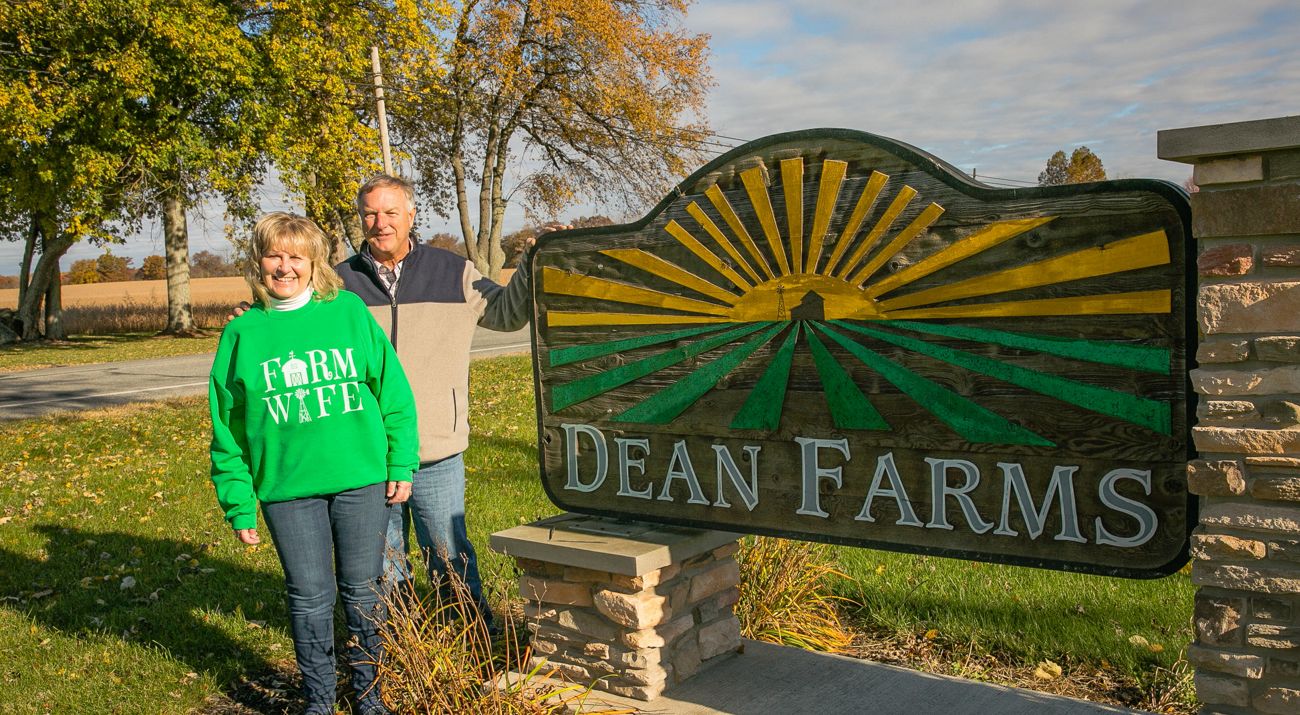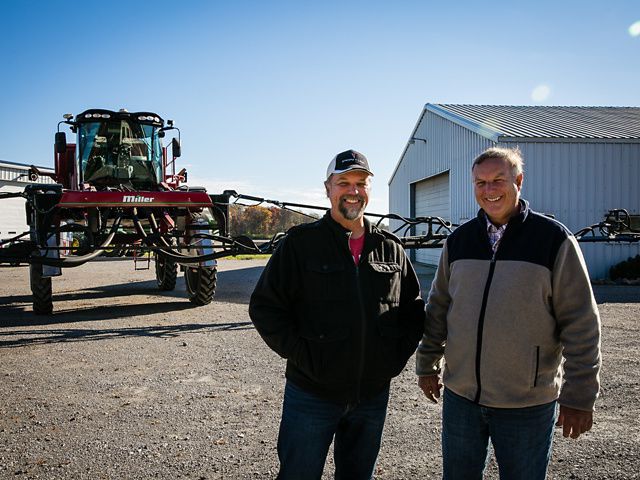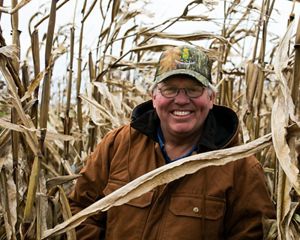
Farmers at the Forefront of Soil Health
See how other farmers are building a sustainable future on their lands.
See Their StoriesAs a young farmer, Allen Dean had few resources but ample grit. Apprenticing taught him how to farm because he wasn’t born into it. So, when he realized he couldn’t afford the four-wheel drive tractors and equipment needed for tilling, he made the bold decision to try no-till (planting without plowing first).
That was in 1980. Dean planted his first no-till corn field behind the woods on his farm, where nobody could see it. It wasn’t the way to farm, says Dean. “We kind of hid it.”
Today Dean is 100 percent no-till on his 1,900-acre Ohio farm, where he grows soybeans, wheat and winter barley. A cover crop enthusiast, Dean also runs a side business, producing and selling cover crop seeds and helping farmers learn how to use these noncash crops to help build up the soil and reduce erosion. He also practices the 4Rs of nutrient stewardship—applying the right source of fertilizer at the right rate and the right time in the right place—and is amazed at the changes he’s seen in his farm’s soil health over four decades.
Quote: Allen Dean
We know that we have to grow more food in the future to feed everyone. I really believe that it’s going to come down to healthier soil. We know we can increase yield with higher organic matter.”
Boosting Soil Biology
“I remember when we used to do tillage we would dry the soil out, compact it, and we didn’t realize that all the things we were doing was detrimental to the soil biology. Today putting on all these cover crops, and not disturbing the soil, the biology survives a whole lot better, the mycorrhizal fungi [that interact with roots and assist plant growth] and the bacteria . . . and the earthworms.”
Economics may have gotten Dean started on no-till, but in time he realized its benefit for reducing soil erosion. “That was a really big plus back in those years,” he says. “We always watched water leaving fields carrying nutrients [like phosphorus and nitrogen] and sediment, and we knew it wasn’t good.”
Around 2005, Dean got into cover crops because “something was still missing.” Organic matter was increasing very slowly in his soil, and he wasn’t satisfied with his erosion control.
Dean started with radishes on a few fields, noting that while the radishes “mellowed out the soil really nicely . . . and helped our internal drainage,” little gullies and rills formed on his fields after large rainfall events in the spring. That led him to add a cover crop to protect the soil from the wet and cold of the winter months, planting rye with radishes the following summer after wheat. The two held the soil together better.
A few years later, he says he “got braver” and started adding other crops, beginning with crimson clover. Today Dean is up to a seed mix of 18 different cover crop species.
“I know that sounds kind of wild and crazy,” says Dean. “Once we got up to 8 or 10 species, I thought this is probably all that’s really necessary, but since then we realized that the more species we put out there, the better it is.” Each cover crop brings something different to the soil.

Earthworms Re-engineering and Reviving the Soil
Last year, Dean planted winter barley after oats as a cover crop and couldn’t believe how quickly the barley came up. Walking the entire 27-acre field was like walking on a sponge, he says, it was so soft. Earthworm middens, little piles of worm castings marking the entrance of an earthworm burrow, were everywhere—a sign of strong soil health. “I couldn’t believe how those earthworms had literally turned that farm upside down.”
Earthworms drag organic matter, like cover crop residues, into their burrows, where they break it down into forms that can be taken up by plants. The tunnels they create loosen the soil and increase the amount of air and water that can reach plant roots. Water-holding capacity has also increased, and soil erosion is minimal.
“It’s just black and white,” says Dean. “When we get large rainfall events and if we have water leaving our fields, the water is clean, there’s no sediment leaving with it.”
Wind erosion has also greatly reduced. Dean recalls a wind storm two years ago. “The air was so full of dirt it was unbelievable, but we could see where the fields had cover crops on them the dirt wasn’t leaving. But for the guys doing tillage, it was massive amounts of soil blowing away.”
The New Frontier in Agriculture
Viewing cover crops as “the new frontier in agriculture,” Dean began helping his neighbors pick seed mixes, and plant and manage the crops. Over time he purchased large seed blending equipment, built a commercial-scale facility, and custom designed a machine for planting the cover crop seeds into the cash crop. Today he and his employees plant cover crops on thousands of acres a year, and he sells seeds to farmers from Georgia to Minnesota. He also harvests oats, cereal rye and barley, for cover crop seeds.
Dean has practiced the 4Rs of nutrient management for several years to reduce both costs and excess fertilizers flowing into waterways. Beyond soil health, Dean is motivated by wanting to protect the environment. “It’s shocking to see what’s transpired on Lake Erie, as well as on other smaller lakes around here,” he says, referring to phosphorus runoff contributing to toxic algae blooms.
And more broadly, “We know that we have to grow more food in the future to feed everyone,” he says. “I really believe that it’s going to come down to healthier soil. We know we can increase yield with higher organic matter. We’ve just got to continue to push that way.”
